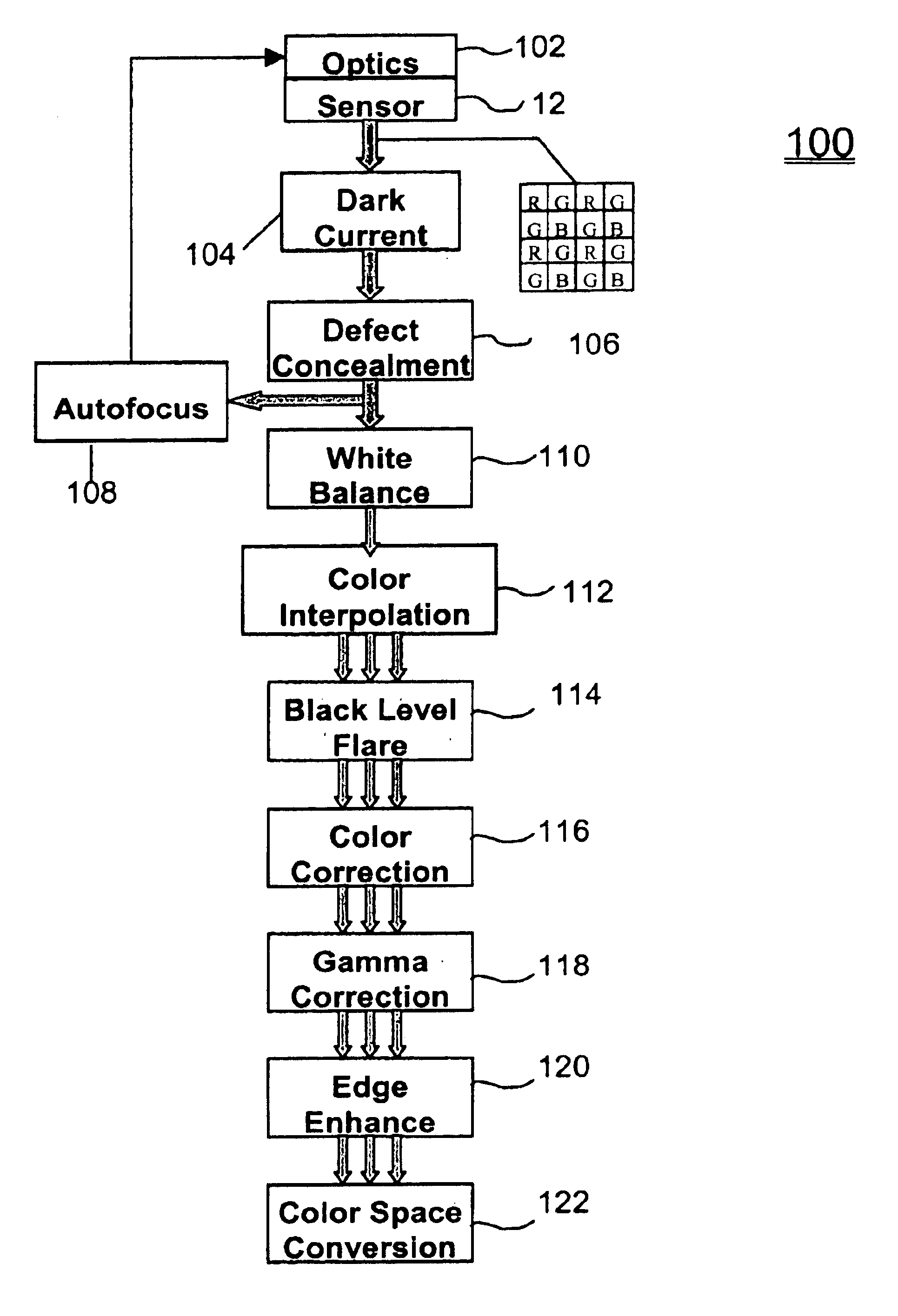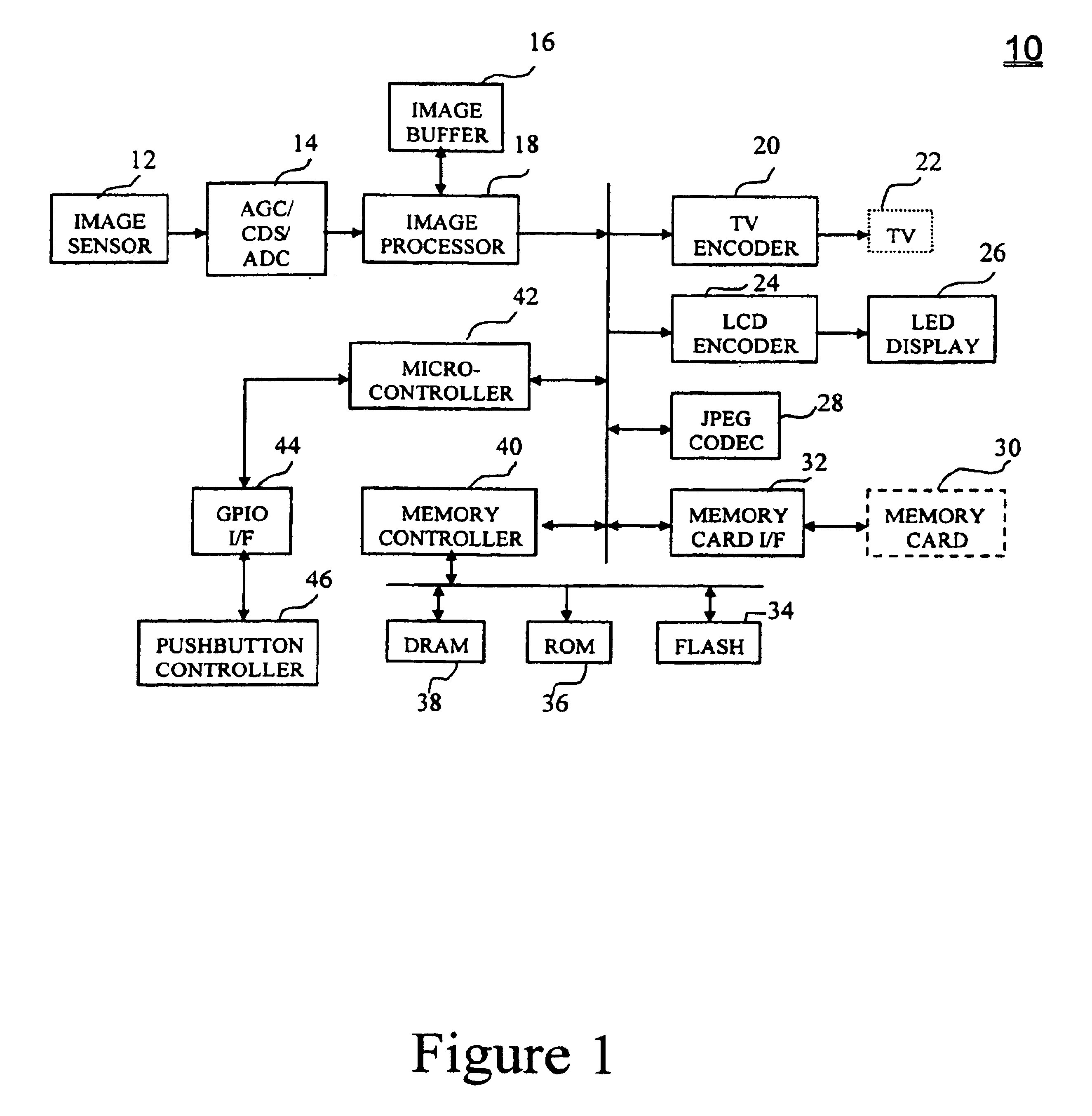Pixel selective white balancing
a white balance and selective technology, applied in the field of image processing techniques, can solve the problems of cumbersome white balance, introduce color imbalance, and primarily affect the white balance effect,
- Summary
- Abstract
- Description
- Claims
- Application Information
AI Technical Summary
Problems solved by technology
Method used
Image
Examples
Embodiment Construction
Embodiments of the present invention are directed to a system and method for determining gain coefficients to be applied to image data from multiple color channels in an imaging system for carrying out a white balancing process. Upon capturing an image over an exposure period, an imaging array provides data representative of intensities of photoexposure in distinct spectral regions at specific pixel locations on the imaging array. If the intensities of photoexposure of a group of associated pixels of different colors or spectral regions are proportionally equivalent, the group of associated pixels are determined to be in a “white” region of the image. The gain coefficients are determined from the intensity values of the group of associated pixels in the white regions of the image. The gain coefficients may then be applied to the pixel data from the multiple color channels to provide white balanced color image data.
FIG. 1 shows a block diagram for an electronic camera system accordin...
PUM
 Login to View More
Login to View More Abstract
Description
Claims
Application Information
 Login to View More
Login to View More - R&D
- Intellectual Property
- Life Sciences
- Materials
- Tech Scout
- Unparalleled Data Quality
- Higher Quality Content
- 60% Fewer Hallucinations
Browse by: Latest US Patents, China's latest patents, Technical Efficacy Thesaurus, Application Domain, Technology Topic, Popular Technical Reports.
© 2025 PatSnap. All rights reserved.Legal|Privacy policy|Modern Slavery Act Transparency Statement|Sitemap|About US| Contact US: help@patsnap.com



